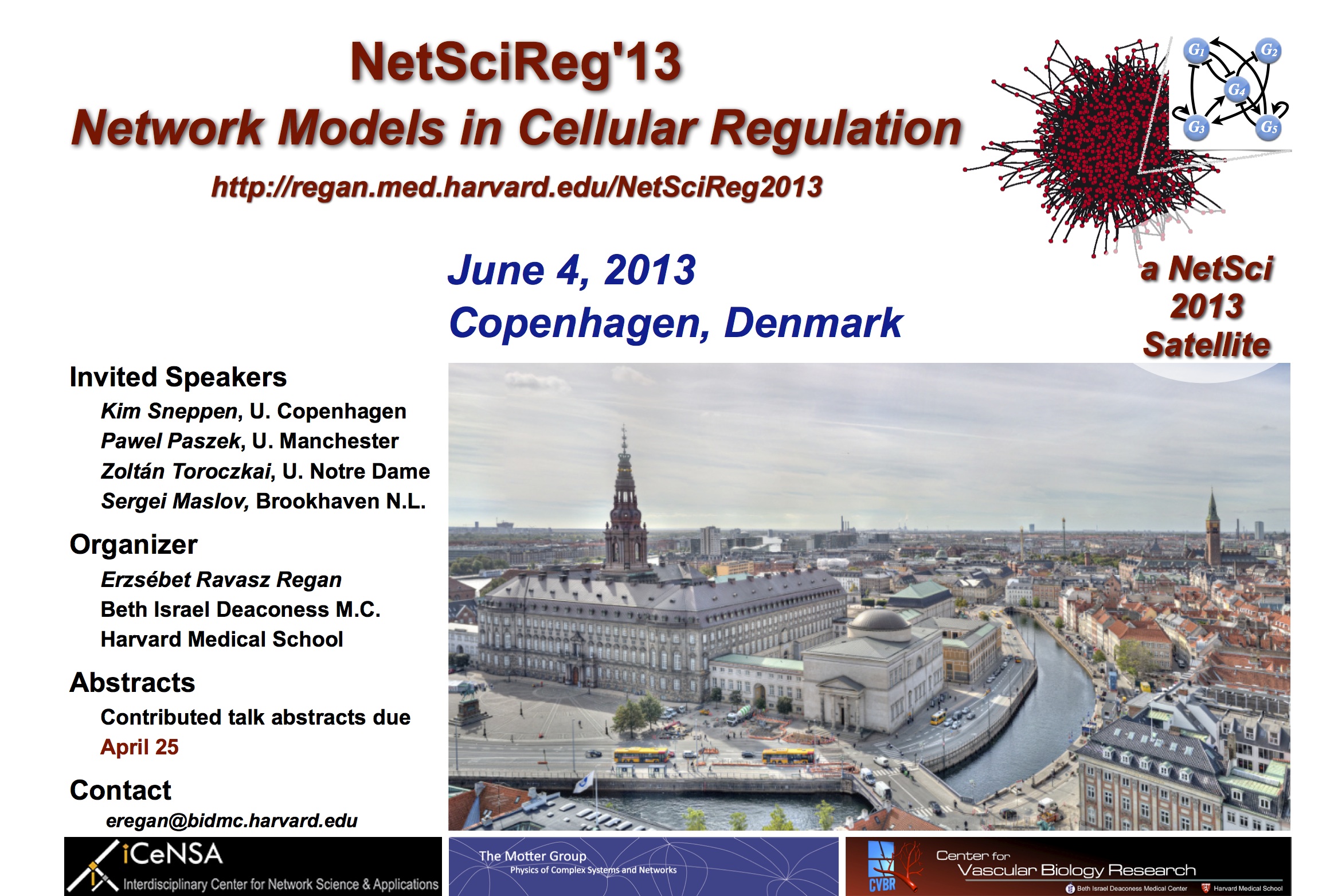NetSciReg'13 - Network Models in Cellular Regulation
June 4, 2013 - Copenhagen
| Synopsis |
| Program |
| NetSciReg'13 Flyer |
| Important Dates |
| Registration |
| Call for Contributed Talks |
| Logistics |
| NetSci 2013 |
| Sponsors |
|
Time-scales and stochasticity in a Boolean model of
stress response in yeast
Vera Pancaldi
Time: 12:15 AM - 12:40 PM
Type: Contributed talk
Affiliation:
Co-author Affiliations:
Abstract: The regulatory response of cells to environmental stress is a fundamental biological process which involves rapid, post-translational control of proteins as well as slower, transcriptional control of numerous genes. The priming of cells with mild stress often leads to an extended resistance to subsequent, stronger stress, a phenomenon known as cross-protection. The pathways that we model are conserved in higher eukaryotes and they are important in diseases such as cancer. We have developped a simple Ensemble Boolean modelling framework to simulate the response to oxidative stress in the fission yeast Schizosaccharomyces pombe. We apply Boolean logic and binary values for gene regulation in single cells, and then calculate continuous values for gene regulation at the population level. The assumption of cell-to-cell heterogeneity within the population is consistent with recent experimental findings. We differentiate between deterministic, rapid post-translational regulation and stochastic, slow transcriptional activation in each cell, which leads to non-trivial behaviour. We validate our simulations by comparing stress response properties of in silico and in vivo mutants. Moreover, the model is used to test cross-protection in response to successive stress treatments. We experimentally confirm the prediction that the total duration of priming stress treatments, even when interrupted by a stress-free interval, determines the level of resistance to subsequent, stronger stress. Finally, we elaborate on the importance of modelling separate time scales in biological processes and on the usefulness of rule-based models in considering the heterogeneity of cellular populations. |
SPONSORS: |



